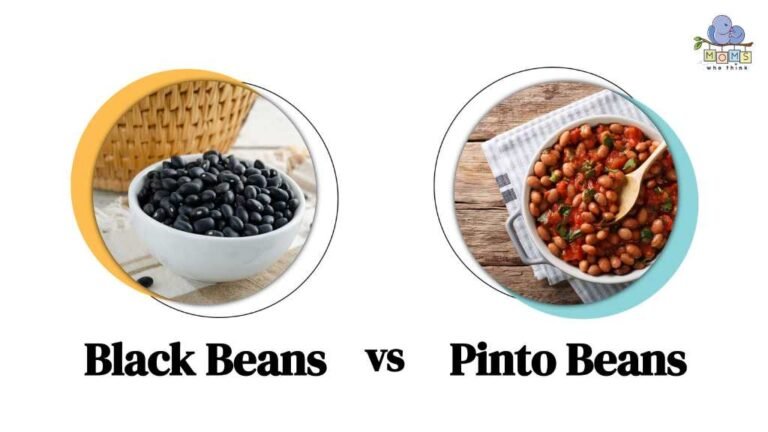The Creamy Debate: Do You Really Need Pasta Water in Alfredo Sauce?
I’ve always believed that a great Alfredo sauce should be rich, velvety, and coat every strand of pasta like a luxurious blanket. There’s nothing worse than a sauce that’s too thick, too runny, or just refuses to cling to the noodles. But then came the debate: do you actually need pasta water to achieve that perfect, restaurant-quality sauce?
Some home cooks swear by it, calling it liquid gold, while others argue it’s just a gimmick. So, I decided to dive in and settle this once and for all.
Think about it—pasta water is cloudy, salty, and full of starchy goodness, but does it really make a difference in Alfredo sauce? Can you get that same creamy, silky texture without it? Or is this just another kitchen myth that needs debunking? If you’ve ever found yourself staring at a pot of pasta, debating whether to reserve that water or send it down the drain, you’re not alone.
By the end of this article, you’ll understand exactly what pasta water does (or doesn’t do) for Alfredo sauce. Whether you’re looking for a foolproof way to elevate your sauce or just want to simplify your cooking process, we’ll break it all down step by step. Let’s get cooking!
The Science Behind Pasta Water

Pasta water might look like a cloudy byproduct of cooking, but it plays a crucial role in creating a smooth, velvety Alfredo sauce. As pasta cooks, it releases starch into the water, transforming it into a natural thickening agent.
When added to a sauce, this starchy liquid helps bind ingredients together, creating a creamy consistency without the need for extra cream or butter. Without it, Alfredo sauce can separate or feel too heavy, making pasta water an unsung hero in achieving restaurant-quality texture.
Temperature also plays a key role in emulsification—the process of blending fat and water into a stable mixture. Hot pasta water helps loosen thick sauce, allowing the butter and cheese to meld seamlessly with the liquid. If the sauce gets too cold, the fats may separate, creating a greasy or clumpy texture instead of a smooth, luxurious coating.
To get the best results, it’s important to add pasta water gradually. A splash or two can work wonders, but adding too much may thin out the sauce. A good rule of thumb is to reserve at least a cup of pasta water before draining, giving you enough flexibility to adjust the sauce’s consistency as needed.
For comparison, here’s how pasta water affects Alfredo sauce versus using plain water or extra cream:
| Liquid Added | Effect on Alfredo Sauce |
| Pasta Water | Creates a smooth, cohesive sauce with better cling to pasta |
| Plain Water | Thins out the sauce without adding structure |
| Extra Cream | Adds richness but can make the sauce overly heavy |
By understanding the science behind pasta water, you can elevate your Alfredo sauce.
| Check out: Store-Bought Better Alfredo Sauce: How To Make It? |
The Role of Pasta Water in Alfredo Sauce
Pasta water isn’t just salty, starchy liquid; it’s liquid gold in the world of Italian cooking. When you cook pasta, it releases starch into the water, which can help bind sauces together. This is especially useful in oil-based sauces like aglio e olio. But does it serve the same purpose in Alfredo, which already has cream, butter, and cheese?
What Happens Without Pasta Water?
If you skip the pasta water, your Alfredo sauce might still turn out fine—until it meets the pasta. Without that extra bit of starchy liquid, the sauce may struggle to cling to the noodles, leaving you with a gloopy mess or a pool of butter at the bottom of the plate. You might have the right flavors, but the texture could be off.
When and How to Use Pasta Water
Adding pasta water isn’t just about tossing in a ladle and hoping for the best. The key is knowing when and how to use it. Here’s how to do it right:
- Reserve before draining – Scoop out about a cup of pasta water before you drain the pasta.
- Add gradually – Start with a few tablespoons and stir to see how the sauce reacts.
- Emulsify – The water helps bind the fat and cheese, creating a silkier texture.
- Adjust consistency – Too thick? Add more pasta water. Too thin? Let it simmer and reduce.
| Benefit of Pasta Water | What It Does to Alfredo Sauce |
| Adds starch | Helps the sauce cling to pasta |
| Enhances creaminess | Prevents greasy separation |
| Adjusts consistency | Makes the sauce smooth and velvety |
| Read: How to Prevent Pasta from Sticking? |
How to Properly Collect Pasta Water
To maximize pasta water use, collect it at the right time and place. The best time to save pasta water is just before draining your noodles. Since the starch content increases as the pasta cooks, the water near the end of the boiling process is the most useful for thickening and emulsifying sauces. Simply dip a heat-resistant measuring cup or ladle into the pot and scoop out the desired amount before pouring the rest down the drain.
But how much should you keep? Generally, you should set aside approximately one cup of pasta water for each pasta batch, even though you might not use it all. For a lighter sauce, start with a few tablespoons and gradually add more until you reach the perfect consistency. A small amount of additional pasta water can help thin out an overly thick sauce without making it too thin.
To ensure the best results, avoid over-salting your pasta water, as too much salt can make your final dish overly salty. Additionally, don’t wait too long before adding it to your sauce—pasta water works best when it’s still hot, as the heat helps the starch integrate smoothly. If you accidentally forget to save some, a quick trick is to mix a bit of hot water with a pinch of flour to mimic the effect.
By properly collecting and using pasta water, you can elevate your Alfredo sauce—or any pasta dish—to a whole new level. A little preparation goes a long way in creating a creamy, restaurant-quality meal right in your kitchen!
| Related: How To Keep Alfredo Sauce From Separating When Reheating |
The Classic Alfredo vs. Modern Alfredo Debate
If you’re a purist, you might be shaking your head right now. Traditional Alfredo, as first made in Italy, had only butter, Parmesan, and pasta water—no heavy cream. So, in that sense, pasta water wasn’t just helpful; it was essential. But in modern Americanized Alfredo, which is heavier on the dairy, some argue that pasta water isn’t as necessary.
Final Verdict: Is Pasta Water a Must?
The short answer? It depends on your technique. If your Alfredo sauce comes out thick and sticky, a splash of pasta water can work wonders. If your sauce is already smooth, you might not need it. Personally, I always keep a little on hand—just in case. Because in cooking, as in life, it’s better to be prepared.
So, next time you’re making Alfredo, will you save some pasta water? Or do you think it’s an unnecessary step? Let’s keep the debate going!

Kathy is a restaurateur, artist, and blogger. After spending more than 10 years in the restaurant industry, she has decided to go digital and share her expertise and experience online.







